► Tested at the Bedford Autodrome
► No driver assists
► Easy to pick-up, hard to master
It’s two-jumpers cold at Bedford Autodrome and the tarmac’s wet in the way it tends to be on November mornings, not because it’s rained overnight, but because at this hour even yesterday’s damp air is still sleeping on the ground.
The day starts in the passenger seat with three sightseeing laps (or four, I lost count) with BTCC driver Bobby Thompson. He asks when I last drove on this circuit. I suspect he’s looking for any answer other than ‘never’, but at this point I figure it’s best to be honest – I’ve done plenty of track driving, but none of it here, and none of it in a turbocharged Radical SR10.
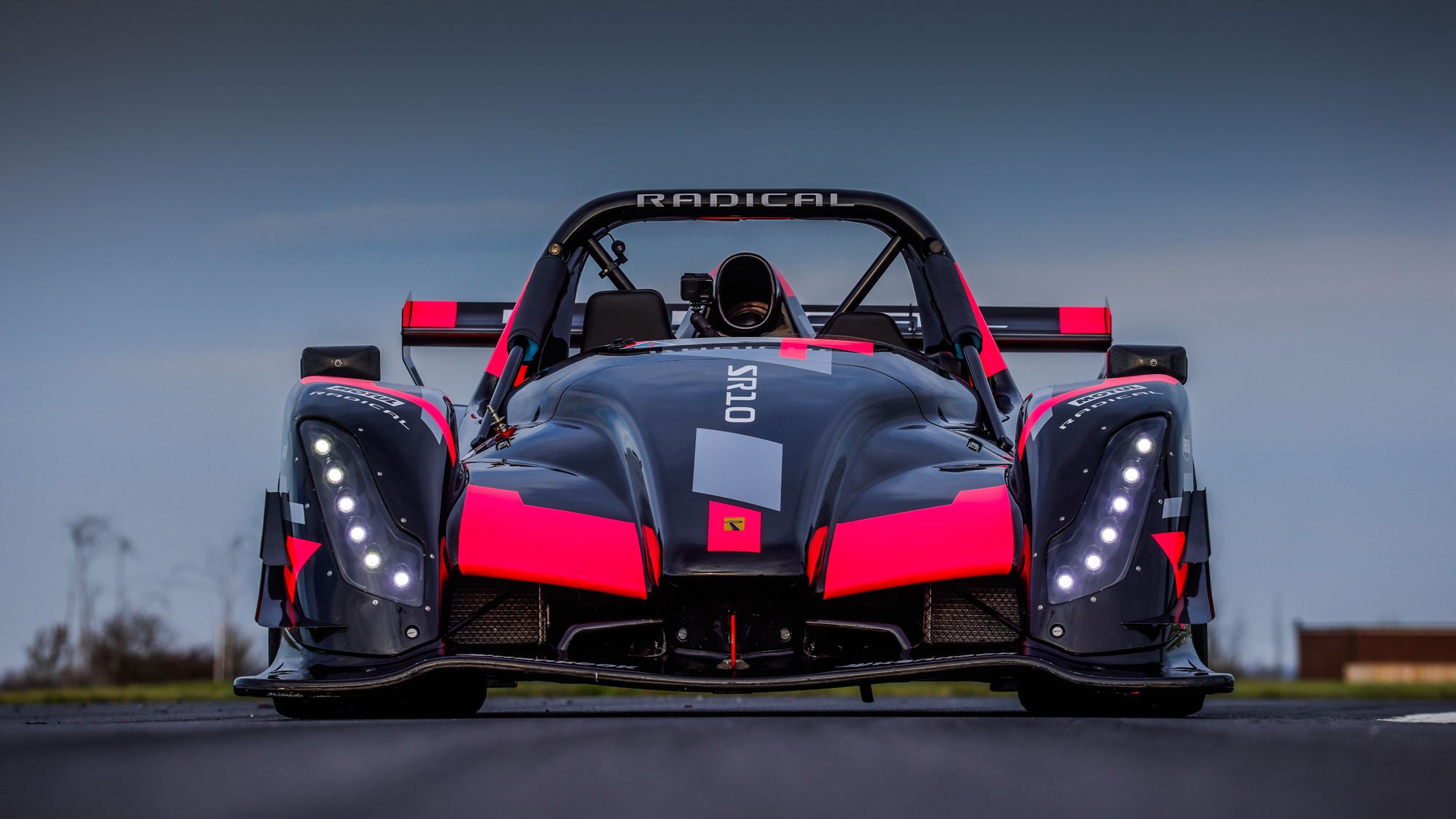
‘Ok well be careful,’ he replies, ‘because it’s flat and featureless and a lot of the corners look the same.’ That’s not all – the circuit hasn’t been used much over the summer (because of the virus) so it doesn’t have a comforting layer of prelaid rubber. The surface is ‘green’, which I suspect is racing-driver speak for ‘slippery AF’, and am now doubly jealous of those driving the car after lunch, with their warm beds, and warm tarmac.
Bobby is setting a pace that feels remarkably fast for a car weighed down by journalistic ballast, both physical and metaphorical – i.e. my 90kg, and the danger of an unscheduled rallycross test on one of Bedford’s generous run-off zones, before any of us have had a chance to drive the car.
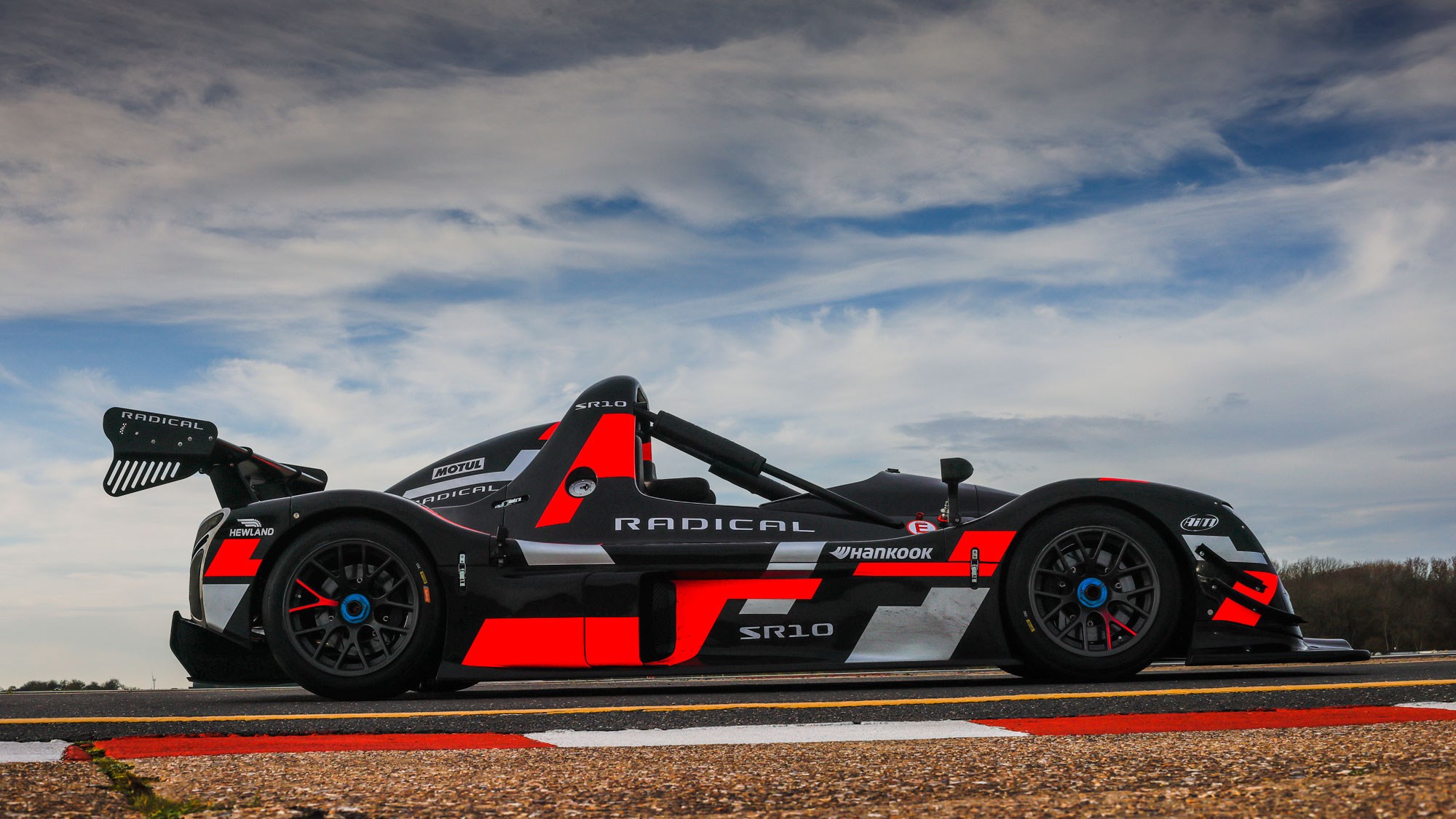
Anyway, that’s the scene set – the track’s like a greased ice rink, I don’t fully know where I’m going and the car has no driver aids – and I mean none. Not even ABS. Letting me loose in its newest and most powerful SR model in these conditions suggests Radical has either a huge amount of faith in my ability or the car’s, and it’s time to find out which.
What’s the SR10 like to drive?
Even on a wide, flat racetrack the sensation of speed is ferocious, not because the scenery is rushing past (because there isn’t any) but because the car leaps from one corner exit to the next braking point with no discernible transition. It’s more teleportation than driving. The line on the track that was over there a second ago is now under your wheels.
I don’t actually know how fast I’m going in cold miles per hour because I’m not brave enough to take my eyes off the road for even a split second to find the digital speedo section of the wheel, in case I look up again and just see grass, like coming out of hyperspace a fraction of a second too late and finding yourself inside a planet.

The SR10 accelerates in a curious way – it doesn’t suddenly pin you in your seat, but surges forward as if it’s moving the ground beneath you. It’s the difference between being thrown into boiling water or being rapidly warmed up from room temperature.
From this perspective at least it’s very user-friendly and surprisingly easy to deploy – my initial trepidation has been left behind along with the contents of my stomach and my power of rational thought. I push the gas to the floor as I unwind the steering. Nothing terrible happens. Maybe everything is going to be ok.
‘You’re not going to be going as hard as Bobby so the engine isn’t going to get as hot,’ one of Radical’s engineers told me in the pits as he tightened my belts before lift-off, Apollo 13 style, ‘so if you get a low temperature warning come back and we’ll put some blocks in the inlets.’ Can you imagine the humiliation? Mentally I add ‘keeping the engine warm enough’ to my short to-do list, fractionally above ‘not binning the car’.
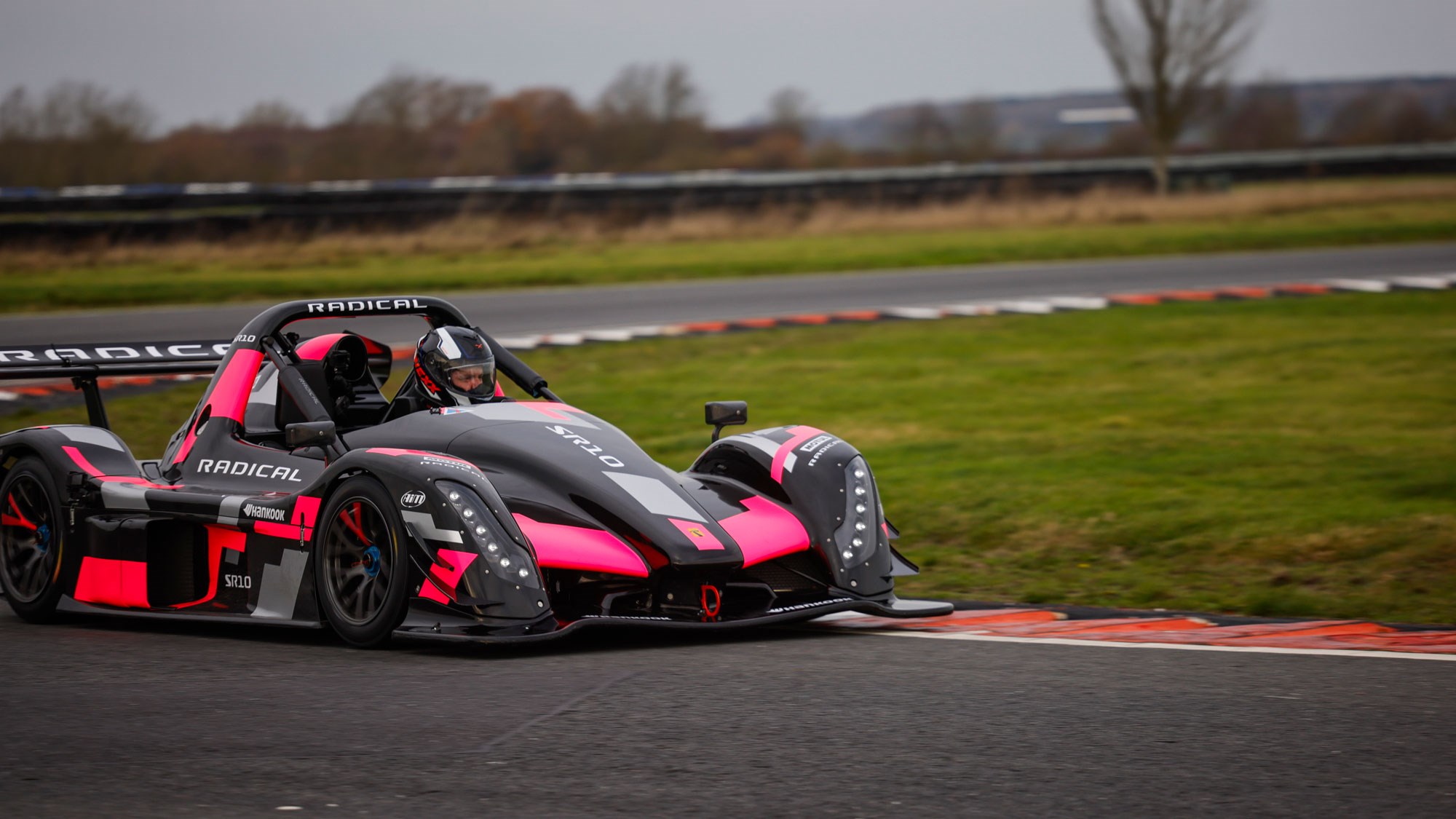
But like all track weapons the SR10 is recalcitrant at low speed. Actually, that’s not fair, but it’s certainly not as happy crawling around the pit lane as a more road-focussed (relatively speaking) McLaren 620R or even Radical’s own SR3XX. This is a proper grumpy racecar – I stalled it once in the paddock, and nearly again while following the photography tracking van in first gear, which revealed all manner of mechanical thrashing noises from the gearbox and a tenancy to kangaroo at anything slower than a jog.
The same goes for the gearshifts on my first slow lap – they’re a bit abrupt up and down the ‘box, to put it kindly, and overall the car gives off an aura of wanting you to just bloody well get on with it. All tools are designed to work within a specific set of parameters, and you can tell that pottering around tentatively is not the SR10’s. Perhaps that goes without saying when you consider that the six-speed sequential transaxle was originally developed for Formula 2 racing.

There’s also the brakes to consider in this mix because when I’m bearing down on turn one (a hairpin) at what feels well into three figures I’d like them to stop the car ideally before the end of the track, and certainly before the PalmerSport reception desk, and that means getting some heat in them. Thing is, like I said there’s no ABS, and that means a wholesale recalibration of my track-braking technique, which up until now involved standing on the pedal until it vibrates under my foot and the hazard lights come on, and then making a mental note to bring my braking point back a bit.
Do that here, Bobby tells me, and a lockup on the greasy tarmac will leave you little room for manoeuvre (you’re in the gravel, in other words), which is a situation I’m keen to avoid not least because of the car’s super low nose. Even though they’re unassisted and need a firm push, I end up stopping about 100 yards before the corner. The brakes are very effective. And as I find out in later laps, full of feedback and supremely easy to modulate.
After turn one there’s a fun stretch of relative straightness to experience full throttle in second and third gear, where, having forgotten to put my helmet visor down, the accumulating wind rush nearly pulls my head off. But even with it open the SR10 sounds undramatic. The name Radical is synonymous with ‘screaming motorbike engine’ so it’s a bit weird that the soundtrack coming from the SR10 is bassy and lost to the wind at higher speed, the redline not quite the 10k and change you get in an SR3XX. It’s effective, sure, but not evocative.
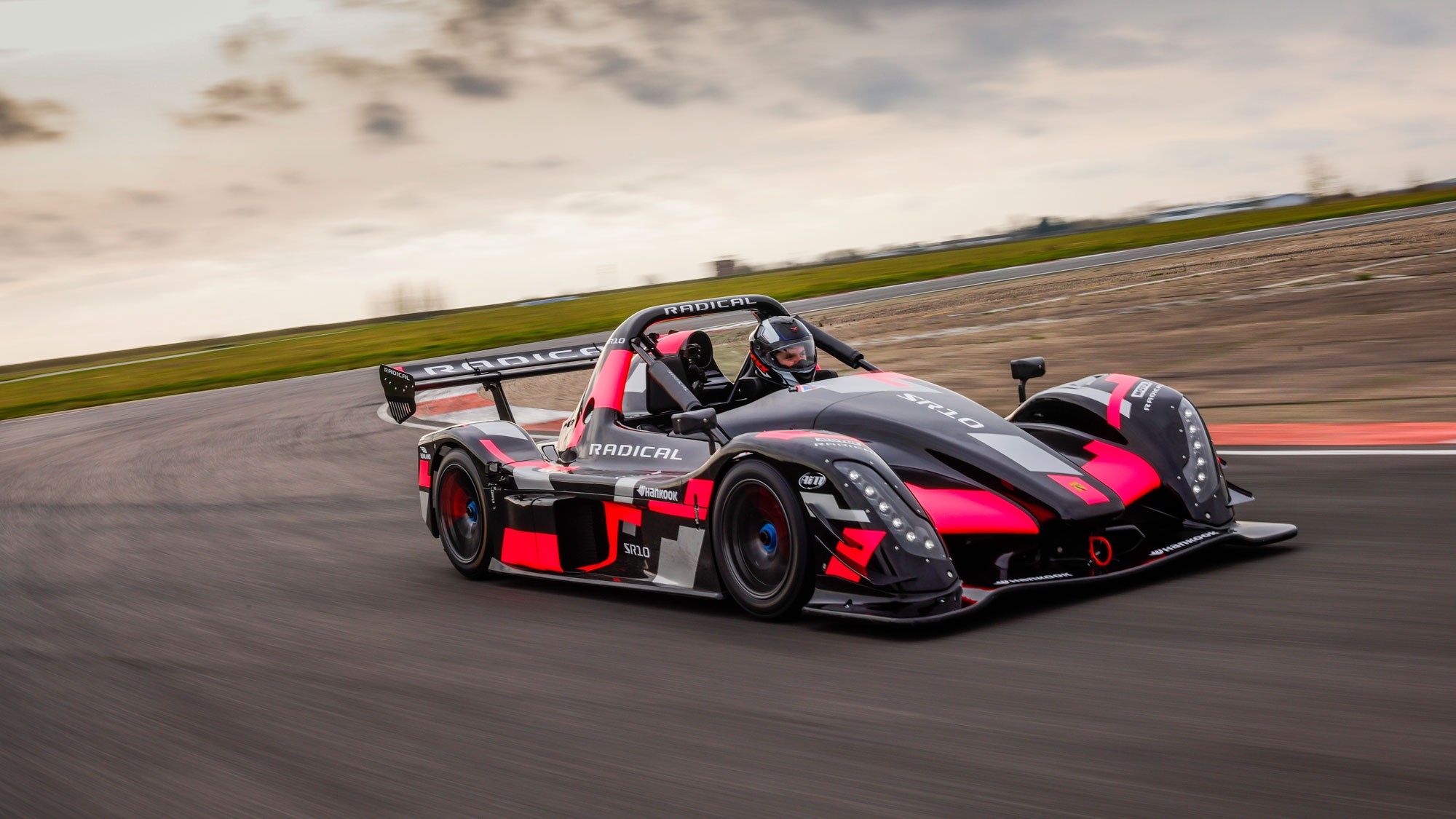
Its origin is also going to take a bit more explaining to your mates than the slower car’s exotic-sounding Hayabusa-sourced lump because the SR10 uses a Ford engine, of all things, displacing 2.3-litres and strapped to a massive Garrett turbo. Radical says it works quite a considerable amount of magic on the stock unit – by way of forged pistons and con rods, plus a dry sump system to improve durability, but there’s no getting away from the fact it could have been lifted from a hatchback.
But durability, curiously enough, is kind of the name of the game for this engine. Pick an SR10 because you want a longer service life than the bike-powered version, not just because it packs a monstrous 425bhp. The motor is relatively unstressed, says Radical, meaning it’s easy to maintain and can go longer between rebuilds, making it perfect for motorsport clubs and track day addicts alike.
And since I criticised it earlier the gearbox deserves a special mention now we’re up to speed and operating in a window where it’s most comfortable. The gearshifts are seamless and instant on anything more than gentle power. It’s hard to be more descriptive than that – I didn’t really notice it working because, like a good burger bun, that’s kind of the point. As a supporting cast member it was flawless. You think second gear, you get second gear, etc.
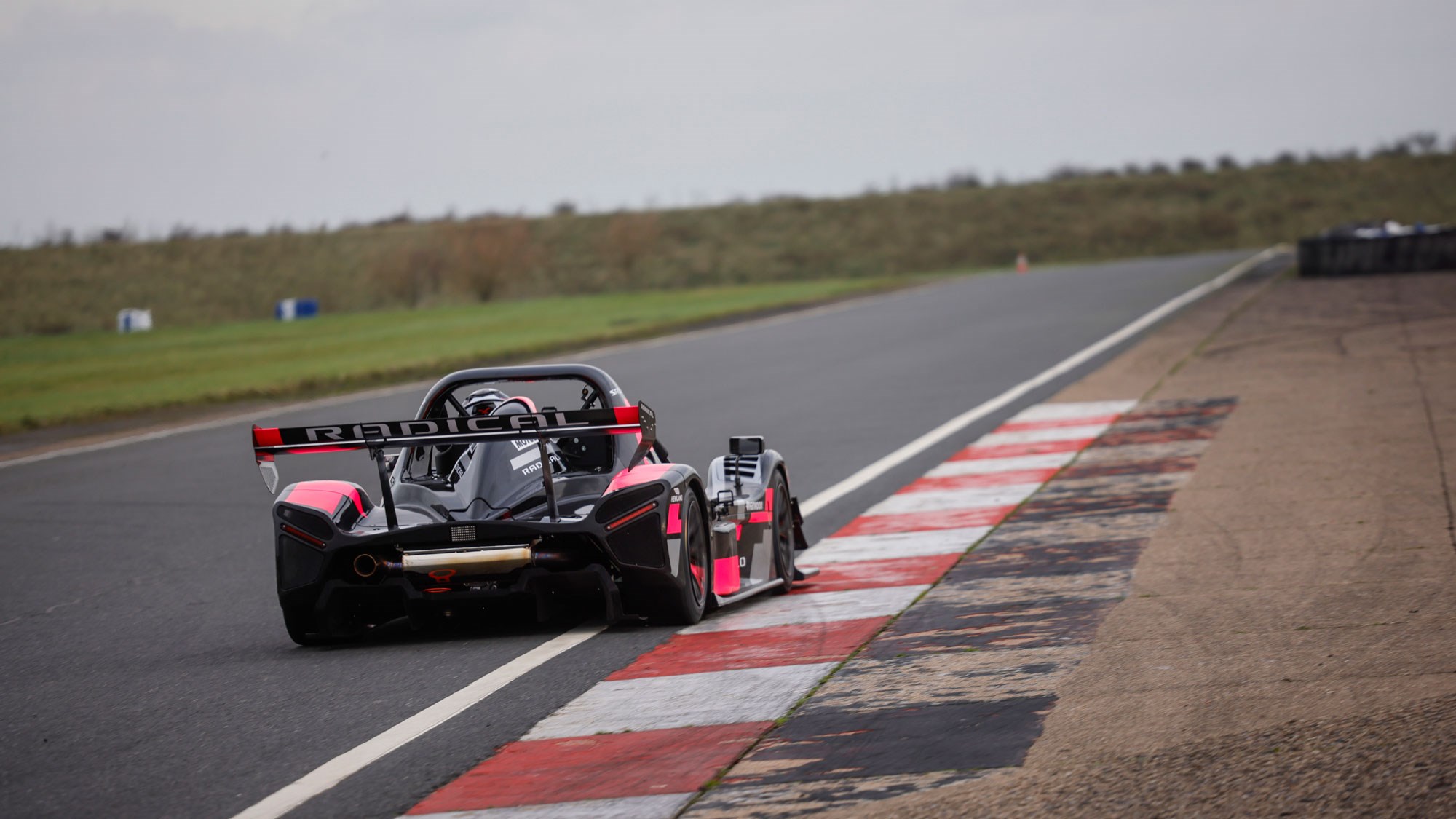
What about the handling?
The most complicated section on Bedford’s west circuit are the Palmer Curves, which you approach after a left kink that handily deposits you on the correct side of the track. It took several laps to build enough confidence in the car to carry speed through this fast left, right, left complex because the brake board is positioned very late, on the first clipping point. And there’s a lumpy bit of tarmac under your left wheel just waiting to upset the balance.
At first I got the car set up in a straight line and then tip-toed round, but soon I was happy to stop late and hard on a diagonal angle, sometimes with a bit of steering lock left on, and with the front left bumping the knobbly tarmac for good measure. It is quite a confidence inspiring car, this.
Despite the damp I find myself cutting deeper and deeper across the kerbs – the ridges of which are transmitted directly into the car via its purposefully firm chassis and feedback-laden wheel. It’s quite a physical experience altogether and one that will leave me feeling decidedly knocked about the next day.
Following on is a long left that goes on forever before flicking into a tighter right where the benefit of all that aero starts to make itself known. My neck muscles were the limiting factor here. The SR10 has extraordinary mid-corner poise and seemingly unshakeable traction – no matter how much the wheel writhes in my hands as we pitter patter over slabs of tarmac the grip on the ground is relentless and the direction change to the next corner utterly unshakable, with no movement from the body to manage.
And when grip levels do begin to wane the SR10 buzzes-in faster than a student on University Challenge. I have been guilty in the past of describing fast road cars as transparent when it comes to communicating their limits. The Radical is in a different league. It feels like the wheel and seat base warn you of an impending slide before it’s actually happened.
Does the turbo make it harder to drive than a 1980s F1 car?
It’s easy to keep the SR10 in the power – there’s no mistaking when the car’s on boost because it whistles like your Nan’s hob-top kettle filled with thermite – but still I was pretty concerned about the car dropping out mid-corner and inducing a Top Gun style flat spin. But in reality the power delivery can be as linear as you want it to be, thanks to a dial on the wheel that adjusts the throttle map from cotton-wool shoes to knife-edge punch. Because it’s wet and I haven’t got much time to experiment I’ve cycled between setting one and five (out of eight), the latter feeling significantly more urgent than the former.
So unlike Nelson Piquet’s company car the Radical can be configured in a way that makes its power delivery quite approachable, and that means you can go out and build confidence in yourself and the car without feeling like you’ve got to thrash it to keep everything warm. And from there you’re able to find faster lines and later braking points.
Verdict
The Radical SR10 accelerates like a superbike, but corners like a car. I stole that analogy from one of my colleagues. So why buy this one and not the equally extraordinary SR3XX, which actually sounds like a superbike, because it’s powered by the same engine and gearbox as one? Although it’s not as powerful it’s still really rather fast, certainly quick enough to see off all but the most committed on a track day.
Well, just like that car, the SR10 is unbelievably easy to pick up, but difficult to master. The conditions at Bedford were far from favourable and the car was monolithically solid – at no point did I think it was going to pull the rug out from under me. Radical let us loose in it because they knew it would look after us.
Yet having watching my on-board footage I can see plenty of places where even in the cold and wet I could have picked up time. Imagine how it would perform on a dry track in the summer. I don’t think I even scratched the surface, in truth.
So it’s just as approachable as the less powerful car but with a higher ceiling to progress to, and thanks to a longer service life you can use it more without worrying so much about downtime. The extra punch on a long straight makes up for the lack of howling from the engine, too.
To put it more directly, I can’t think of another car that makes this level of performance so accessible. As a prospect for us sub-BTCC level drivers, that sounds like quite a solid investment.